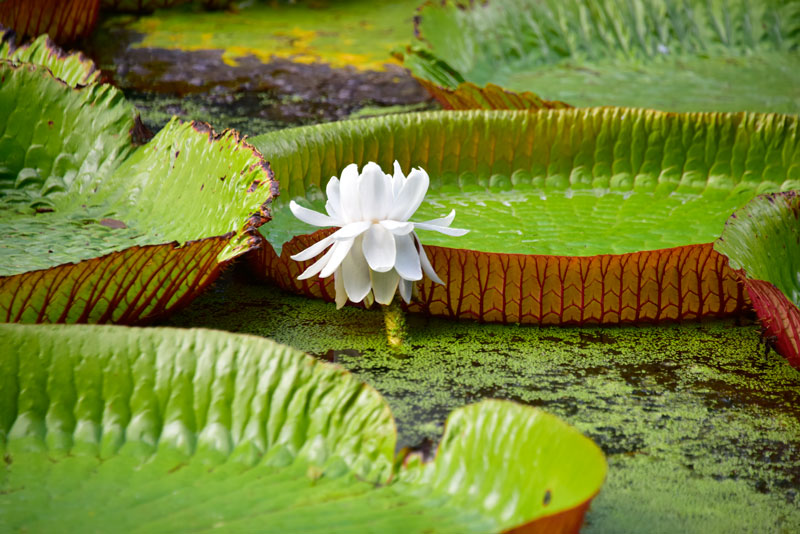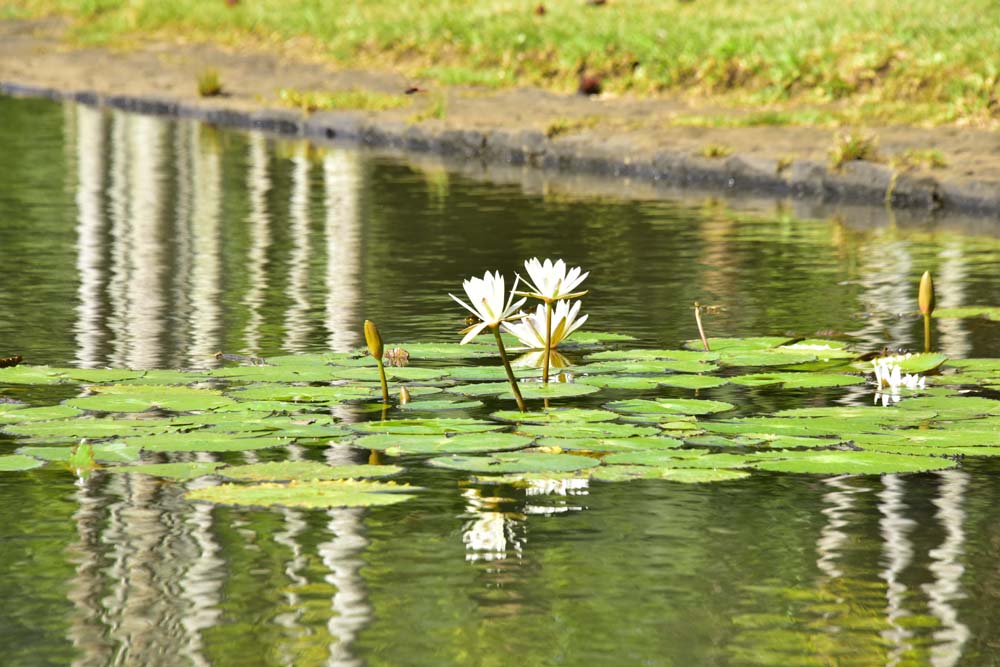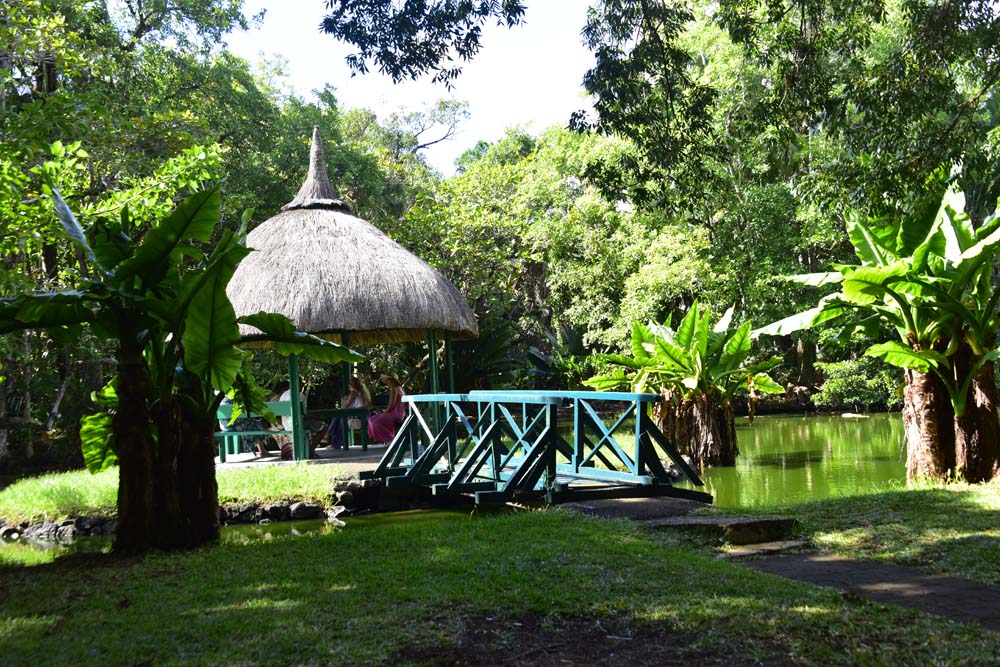
Lily Ponds
The rectangular water lily pond houses the famous giant water lily of the Amazon (Victoria amazonica). Its huge floating leaves with a raised edge are spectacular. On two successive days, the flowers open late in the afternoon and remain open until the middle of the following morning. On the first evening the flowers are creamy white with a pleasant fragrance and the next day they turn pink. There are also at least three other species of Nymphaea with white, pink or blue flowers. It is a remarkable place to study the characteristics of water plants.

Lotus Ponds
The lovely lotus ponds consist of white, yellow and pink flowers. The Nelumbo (Nelumbo nucifera) found in this pond is the lotus that is venerated by Hindus. The root stalk is farinaceous and the seeds are edible. Incidentally, it may be of interest to know that “Om Mani Padmi Hum” which means “hail to the jewel in the lotus” is the most common prayer among Tibetan Buddhists. The lotus is also the national flower of Egypt and has been revered by the Egyptians for thousands of years.

Grand Bassin
On crossing the bridge seen to the right on Rochon Avenue, one enters a kiosk on one of the islets in the pleasant ‘Grand Bassin’. Originally a marshy spot, it is now a delightful water feature dotted with small islets. The “Poule d’Eau” or “Madagascar Moorhen” inhabits the fringes of this lake.
The islets in the centre of the lake are not accessible, except by swimming or canoeing, both of which are prohibited to the public. They are overgrown with “Papyrus” (Cyperus papyrus), “Ravenala” (Ravenala madagascariensis), “Badamier” ( Terminalia catappa) and many shrubs. This vegetation acts as a cover for the birds found in what is a sanctuary, free from danger from man and various predators.
This “Bassin” or lake is rich in tilapias and another type of fish with long ‘whiskers’, called the “Gouramis”. The tilapias have completely exterminated the “Dame Céré” (a gold fish which was introduced in Mauritius by Nicolas Céré) and the Montezuma Sword Tail (Xiphophorus montezumae). Apart from these, there are a number of usually invisible eels, “Anguilles” and a vast number of small fish locally called “millions”.
